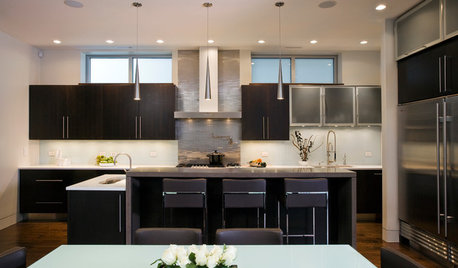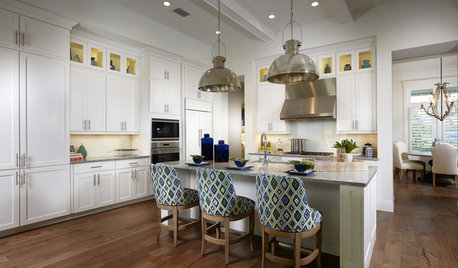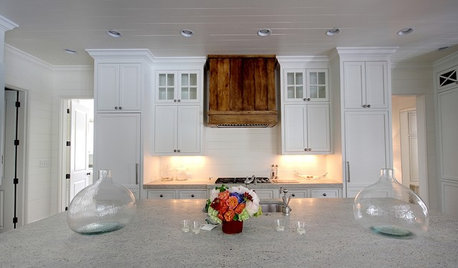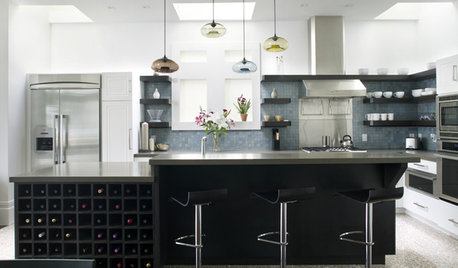Vent hood poll.
footwedge
15 years ago
Related Stories

SHOP HOUZZShop Houzz: Bestselling Range Hoods and Vents
Shop our most popular range hoods and vents to modernize your kitchen
Full Story0

SHOP HOUZZShop Houzz: Large Kitchen Appliance Sale
Save up to 25% on modern ovens, ranges, cooktops, hoods, vents and more
Full Story0

KITCHEN DESIGNA Cook’s 6 Tips for Buying Kitchen Appliances
An avid home chef answers tricky questions about choosing the right oven, stovetop, vent hood and more
Full Story
5 Stunning Modern Range Hoods
Today's kitchen range hoods can look like sleek sculptures. Here's what to look for when you go shopping for one
Full Story
KITCHEN DESIGNHow to Choose the Right Hood Fan for Your Kitchen
Keep your kitchen clean and your home's air fresh by understanding all the options for ventilating via a hood fan
Full Story
KITCHEN APPLIANCESThe Many Ways to Get Creative With Kitchen Hoods
Distinctive hood designs — in reclaimed barn wood, zinc, copper and more — are transforming the look of kitchens
Full Story
KITCHEN DESIGNWhat to Know When Choosing a Range Hood
Find out the types of kitchen range hoods available and the options for customized units
Full Story
KITCHEN APPLIANCESWhat to Consider When Adding a Range Hood
Get to know the types, styles and why you may want to skip a hood altogether
Full Story
KITCHEN DESIGNWood Range Hoods Naturally Fit Kitchen Style
Bring warmth and beauty into the heart of your home with a range hood crafted from nature's bounty
Full StoryMore Discussions








cavu
wa8b
Related Professionals
Brownsville Kitchen & Bathroom Designers · Wesley Chapel Kitchen & Bathroom Designers · South Sioux City Kitchen & Bathroom Designers · Glade Hill Kitchen & Bathroom Remodelers · Albuquerque Kitchen & Bathroom Remodelers · Boca Raton Kitchen & Bathroom Remodelers · Centerville Kitchen & Bathroom Remodelers · Independence Kitchen & Bathroom Remodelers · Morgan Hill Kitchen & Bathroom Remodelers · Spokane Kitchen & Bathroom Remodelers · Eufaula Kitchen & Bathroom Remodelers · Beaumont Cabinets & Cabinetry · Bullhead City Cabinets & Cabinetry · Prospect Heights Cabinets & Cabinetry · Tenafly Cabinets & Cabinetryantiquesilver
clinresga
john_com
alku05
cooksnsews
footwedgeOriginal Author
erikanh
clinresga
sombreuil_mongrel
homepro01
grendal_fly
footwedgeOriginal Author
davidro1
john_com
grendal_fly
clinresga
igloochic
morton5
deegeegirl
footwedgeOriginal Author
lamermaid
davidro1
clean_freak
rjbh20
deeageaux
bickybee
dandgbb
ideagirl2
teachmkt
maks_2000
aliris19
cliff321
davidro1
aliris19
NYSteve
davidro1
kaseki
ellencrowe
alexstanton